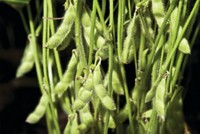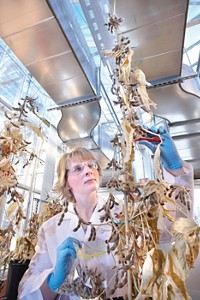Advertisement
Grab your lab coat. Let's get started
Welcome!
Welcome!
Create an account below to get 6 C&EN articles per month, receive newsletters and more - all free.
It seems this is your first time logging in online. Please enter the following information to continue.
As an ACS member you automatically get access to this site. All we need is few more details to create your reading experience.
Not you? Sign in with a different account.
Not you? Sign in with a different account.
ERROR 1
ERROR 1
ERROR 2
ERROR 2
ERROR 2
ERROR 2
ERROR 2
Password and Confirm password must match.
If you have an ACS member number, please enter it here so we can link this account to your membership. (optional)
ERROR 2
ACS values your privacy. By submitting your information, you are gaining access to C&EN and subscribing to our weekly newsletter. We use the information you provide to make your reading experience better, and we will never sell your data to third party members.
Business
Climate Was Right For Deal-Making
Crop Chemicals: Sliding earnings seeded consolidation talk
by Marc S. Reisch
December 21, 2015
| A version of this story appeared in
Volume 93, Issue 49

Conditions for consolidation were ripe in the crop protection and fertilizer sectors this year. Low crop prices punished corporate profits and stirred dissatisfaction with the two businesses while low interest rates and plentiful credit lubricated deal-making talks. Although some of the biggest combinations weren’t meant to be, at least one megadeal, the combination of Dow Chemical’s and DuPont’s agrochemical business, is under way.
The largest failed deal was Monsanto’s $45 billion attempt to buy Syngenta, a rival pesticide and seed producer. Syngenta called the offer inadequate and said regulators were not likely to approve the combination anyway. Even the $2 billion breakup fee Monsanto offered in June didn’t soften Syngenta’s stance.
Also failed was Potash Corp. of Saskatchewan’s $8.7 billion bid for fellow potash supplier K+S. The German firm argued that PotashCorp was only trying to gain control of a brand-new K+S potash project in Saskatchewan on the cheap.
However, CF Industries’ planned $8.2 billion takeover of nitrogen fertilizer assets from OCI, announced in August, may yet be completed. CF plans to base the combined business in the Netherlands, OCI’s home, instead of the U.K. as originally planned, so as not to run afoul of new U.S. Treasury Department rules regarding inversions, a tax-lowering strategy whereby a U.S. company merges with a foreign one and moves its headquarters abroad. The new rules block the merging firms from locating in a “third country” where they did not previously have headquarters.
Two big ag deals consummated this year were holdovers from 2014. Platform Specialty Products completed its $2.5 billion purchase of Arysta LifeScience in February. FMC inked the $1.8 billion buy of Cheminova.
And the merger and acquisition frenzy is not over yet. An earnings squeeze and activist investor pressures led to a plan in December that would unite the crop chemicals and seeds businesses of Dow and DuPont as part of the biggest chemical merger so far of the 21st century. The DowDuPont ag business would be the industry leader with $19 billion in annual sales. The merger puts renewed pressure on competitors to combine, raising the specter, for instance, of renewed talks between Monsanto and Syngenta.
C&EN's YEAR IN REVIEW
Top Headlines of 2015
- Chemical Makers Looked To Big Deals
- NASA Got Up Close And Personal With Pluto
- Opposition To Neonicotinoids Intensified
- 2015 Nobel Prizes In Science At A Glance
- Climate Pact Clinched
- Little Good News For Chemistry Job Outlook In 2015
- Pfizer To Merge Again, This Time With Allergan
- Oil And Gas Industry Under Pressure
- Greening Up Fracking
- An Industry In Spin Cycle
- Finally, Emoji For Chemists
- A Big Deal For Chemists
- Tianjin Explosion Put Spotlight On Safety
- Women Assumed Leadership Roles At American Chemical Society
- Artificial Ingredients In The Crosshairs
- Jacqueline K. Barton, Unwavering Chemistry Champion
- House Science Committee Chair Pummeled Science Agencies
- NIST Veteran Became U.S. Government's Top Chemist
- Gene-Editing Technique Raised Ethics Questions
- World Chemical Production At A Glance
- Classroom Fires During Science Demonstrations Spark Concern
- Climate Was Right For Deal-Making
- American Chemical Society Dives Deeper Into Open Access With The Debut Of ACS Omega
- Lego Began Research On Switching To A Biobased Plastic
- New Chair Took The Helm At Troubled Chemical Safety Board
- Genetically Modified Foods In The Spotlight
- Overhaul Of U.S. Chemical Law Moved
- ACS Scholars Program Turned 20
- American Chemical Society Expanded Its Global Reach
- Scientists Called For Standardized Antibodies
Top Research of 2015
- Flexible Electronics You Can Inject
- Special Delivery For Sensitive Reagents
- Yeast Programmed For Opioid Total Synthesis
- Miracle Machine Builds Molecules On Demand
- Nickel Shines As A Catalyst
- 3-D Printing Takes On A New Dimension
- Atomically Thin Films Grow In Number
- Digging In The Dirt Yields Novel Bacteria Fighter
- Keeping GMOs On A Leash
- A Liquid With Holes In It
- Electron Microscopy Provides Unprecedented Close-ups
Revisiting Research of 2005




Join the conversation
Contact the reporter
Submit a Letter to the Editor for publication
Engage with us on Twitter